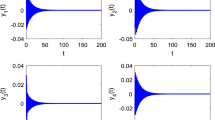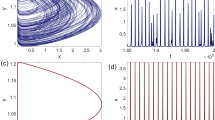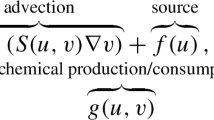Abstract.
We study the existence and stability of traveling waves and pulses in a one-dimensional network of integrate-and-fire neurons with synaptic coupling. This provides a simple model of excitable neural tissue. We first derive a self-consistency condition for the existence of traveling waves, which generates a dispersion relation between velocity and wavelength. We use this to investigate how wave-propagation depends on various parameters that characterize neuronal interactions such as synaptic and axonal delays, and the passive membrane properties of dendritic cables. We also establish that excitable networks support the propagation of solitary pulses in the long-wavelength limit. We then derive a general condition for the (local) asymptotic stability of traveling waves in terms of the characteristic equation of the linearized firing time map, which takes the form of an integro-difference equation of infinite order. We use this to analyze the stability of solitary pulses in the long-wavelength limit. Solitary wave solutions are shown to come in pairs with the faster (slower) solution stable (unstable) in the case of zero axonal delays; for non-zero delays and fast synapses the stable wave can itself destabilize via a Hopf bifurcation.
Similar content being viewed by others
Author information
Authors and Affiliations
Additional information
Received: 27 October 1998
Rights and permissions
About this article
Cite this article
Bressloff, P. Traveling waves and pulses in a one-dimensional network of excitable integrate-and-fire neurons. J Math Biol 40, 169–198 (2000). https://doi.org/10.1007/s002850050008
Issue Date:
DOI: https://doi.org/10.1007/s002850050008




